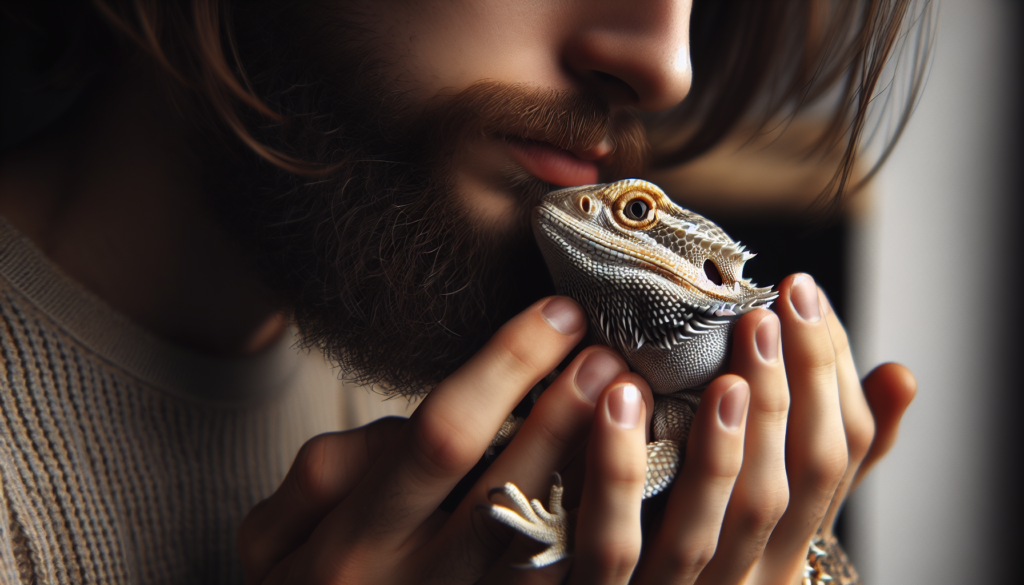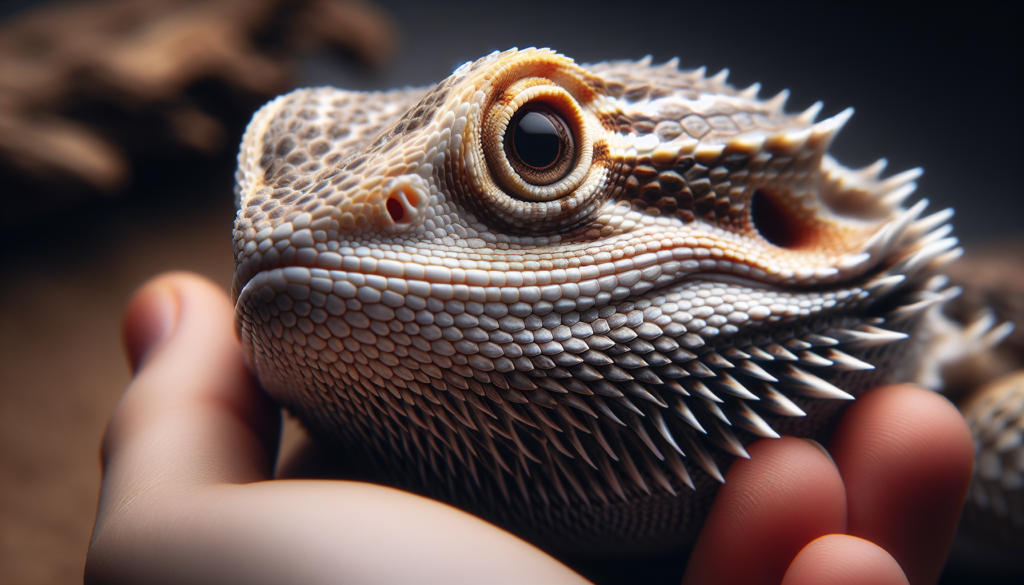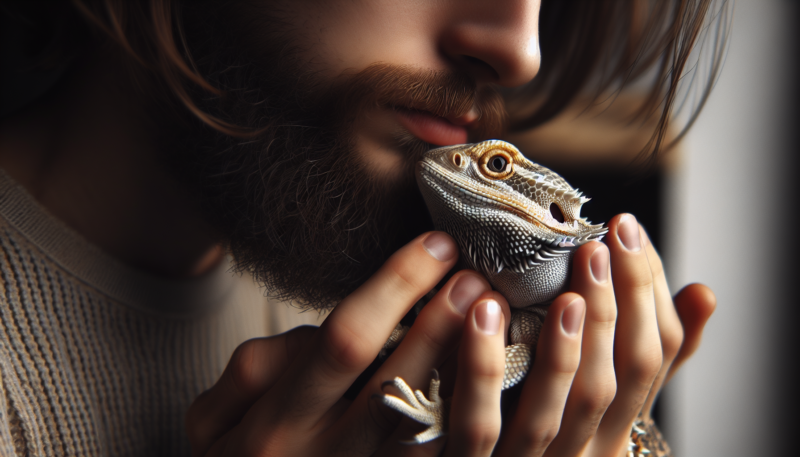Have you ever wondered how long it takes for a bearded dragon to form a bond with their human companion? Well, you’re in for a delightful surprise! Building a connection with these reptilian friends can be a heartwarming experience, but it takes time. As we explore this question further, let’s dive into the fascinating world of bearded dragons and uncover the secrets behind their attachment to their beloved humans. Get ready to be amazed by the journey of friendship that awaits you!
Factors that Influence Attachment
Age of the Bearded Dragon
The age of a bearded dragon can play a significant role in their attachment to their owners. Younger dragons may take longer to form attachments as they are still learning about their environment and may be more cautious. On the other hand, older dragons may already have established routines and may be more receptive to bonding with their owners. It’s important to remember that attachment is not solely determined by age and that individual variations also come into play.
Previous Experience and Handling
The previous experiences and handling of a bearded dragon can greatly impact their attachment to humans. Dragons that have had positive interactions and handling in the past are generally more likely to be open and trusting with their owners. Conversely, if a bearded dragon has had negative experiences or has been mishandled, they may exhibit fear or hesitation towards forming attachments. Patience and understanding are crucial when working with a dragon that has had negative experiences.
Socialization
Socialization plays a key role in a bearded dragon’s ability to form attachments. Dragons that have been properly socialized from a young age tend to be more comfortable with human interaction. Socialization should include exposure to different people, handling, and various environments. This helps them become accustomed to new experiences and builds their confidence in engaging with their owners. Regular and positive socialization opportunities are essential for fostering attachment.
Consistent and Positive Interactions
Consistency is vital when it comes to building a strong bond with a bearded dragon. Regular interactions with their owners help dragons establish trust and familiarity. This can include gentle handling, offering their favorite treats, and spending quality time together. Positive interactions create a positive association with their owner, reinforcing the bond between them. The more positive experiences a dragon has with their owner, the more likely they are to develop a strong attachment.
Patience and Time
Building a deep attachment with a bearded dragon takes time and patience. Every dragon is unique, and the process of forming a bond cannot be rushed. It may take weeks, or even months, for a dragon to fully trust and become attached to their owner. It’s important not to force interactions or push the dragon beyond their comfort zone. Giving them the space and time they need to feel secure will ultimately help in strengthening the attachment.
Understanding Bearded Dragon Behavior
Natural Behavior of Bearded Dragons
To understand the attachment process, it’s essential to familiarize yourself with a bearded dragon’s natural behavior. Bearded dragons are generally solitary creatures in the wild, and they have specific behaviors that help them survive. These behaviors include basking, territoriality, and various bodily signals such as head bobbing and arm waving. Understanding their natural behaviors provides valuable insights into their needs and preferences, ultimately aiding in the attachment process.
Signs of Trust and Attachment
bearded dragons display specific signs when they have formed a bond and trust with their owners. These may include seeking out physical contact, such as climbing onto their owner’s shoulder or hand, as well as willingly accepting handling and petting. They may also show signs of recognition and anticipation when their owner approaches, reacting positively to their presence. These behaviors indicate that a strong attachment has been established, confirming the effectiveness of the bonding process.

Timeline of Attachment
Initial Adjustment Period
Upon bringing a bearded dragon home, they will need time to adjust to their new environment and to become familiar with their owner. This initial adjustment period can vary in length depending on the individual dragon’s personality and previous experiences. During this time, it’s important to provide a calm and secure habitat, allowing the dragon to acclimate at their own pace. Patience is key as they explore their surroundings and begin to build trust.
First Weeks of Interaction
Over the first few weeks of interaction, the bonding process begins to take shape. Consistent and positive interactions should be introduced gradually, allowing the dragon to become familiar with their owner’s scent and presence. Offering treats and engaging in gentle handling can help establish a positive association with their owner. It’s important to respect their boundaries and not overwhelm them during this crucial period of building trust.
Bonding Over Time
Building a strong bond with a bearded dragon is a gradual and ongoing process. With time, trust deepens as the dragon becomes more comfortable with their owner’s presence. Engaging in regular interactions, such as feeding, handling, and playtime, further strengthens the attachment. As the bond grows, the dragon may exhibit increased affection and seek out their owner’s company willingly. Patience, consistency, and understanding are key to fostering this deepening attachment.
Individual Variations
It’s important to note that each bearded dragon is an individual with unique personalities and preferences. While some may form attachments more quickly, others may take longer to fully trust and bond with their owners. Individual variations come into play regarding the attachment process, and it’s crucial to be aware of and respectful towards the dragon’s individual needs and preferences. Adaptability and patience are essential when working with different personalities.
Building Trust and Attachment
Creating a Comfortable Habitat
a comfortable habitat is the foundation for building trust and attachment with your bearded dragon. Providing an adequately sized enclosure with proper temperature gradients and lighting helps ensure their physical well-being. Additionally, including hiding spots, branches, and substrates that mimic their natural habitat creates a sense of security. A comfortable and enriched environment sets the stage for a positive bonding experience.
Establishing a Routine
bearded dragons thrive on consistency and routine. Establishing a daily routine helps them feel secure and establishes a sense of predictability. Consistency in feeding times, handling sessions, and playtime helps the dragon anticipate and understand their daily life. A stable routine contributes to a sense of familiarity and ultimately aids in building trust and attachment.
Handling Techniques
When handling a bearded dragon, it’s important to use appropriate techniques to ensure their comfort and safety. Supporting their body and limbs properly helps reduce stress and the risk of injury. Start with short handling sessions and gradually increase the duration as the dragon becomes more comfortable. Avoid sudden movements, loud noises, or anything that may startle or distress the dragon. Gentle and reassuring handling techniques promote a positive association with human interaction, aiding in the bonding process.
Positive Reinforcement
Positive reinforcement is a powerful tool in building trust and attachment with your bearded dragon. Rewarding desired behaviors with treats, praise, or gentle strokes can help create a positive association with their interactions with you. For example, offering a treat after a successful handling session reinforces the notion that positive experiences occur when they engage with their owner. This positive reinforcement encourages the dragon to seek further interaction and strengthens the bond between owner and dragon.
Observing Boundaries
Respecting and observing your bearded dragon’s boundaries is crucial for maintaining their trust and building a strong attachment. Each dragon has its own comfort zones and may not always be in the mood for interaction. It’s important to recognize when they are displaying signs of stress or discomfort and to give them space accordingly. Pushing the dragon beyond their boundaries can harm the trust that has been built. By understanding and respecting their personal space, the bond between you and your dragon will continue to flourish.

Maintaining the Bond
Continued Socialization
Continued socialization is vital for maintaining the bond between you and your bearded dragon. Regular exposure to different people, animals, and environments helps them remain comfortable and adaptable. Encourage positive interactions with family members and friends, allowing the dragon to become accustomed to different individuals. Socialization also supports their mental stimulation and overall well-being, promoting a healthy and secure attachment.
Health and Well-being
Ensuring the health and well-being of your bearded dragon is essential for maintaining a strong bond. Regular veterinary check-ups, a balanced diet, and proper hygiene are all important aspects of their care. A healthy and well-cared-for dragon is more likely to form an attachment and display positive behaviors. By taking proactive steps to maintain their physical well-being, you are also contributing to the longevity and quality of your bond.
Enrichment Activities
Engaging your bearded dragon in enrichment activities is an excellent way to maintain their bond with you. These activities can include introducing new toys, rearranging their enclosure, or providing opportunities for exploration. Stimulating their minds and encouraging natural behaviors through enrichment helps keep your dragon mentally and physically engaged, ultimately reinforcing the attachment they have formed with you.
Gentle Handling
Ongoing gentle handling is important for maintaining the bond with your bearded dragon. Regular handling sessions help them remain comfortable and accustomed to human interaction. By using gentle handling techniques, respecting their boundaries, and being aware of any signs of discomfort, you continue to build trust and reinforce the bond with your dragon. Consistency and patience are key as you continue to nurture your relationship.
Respecting Personal Space
Throughout your journey of attachment with your bearded dragon, it’s crucial to always respect their personal space. Just like humans, dragons have times when they may want to be alone or simply observe their surroundings. By recognizing and respecting these moments, you maintain the trust you have built and allow your dragon to feel safe and secure. Respecting their personal space ensures that your bond remains strong and healthy.
Conclusion
Building a strong attachment with your bearded dragon takes time, patience, and understanding. Factors such as age, previous experiences, and socialization play a critical role in the attachment process. By providing a comfortable habitat, establishing a routine, using gentle handling techniques, employing positive reinforcement, and respecting personal space, you create an environment conducive to trust and attachment. The bond between you and your dragon will continue to deepen over time, resulting in a rewarding and fulfilling relationship.
